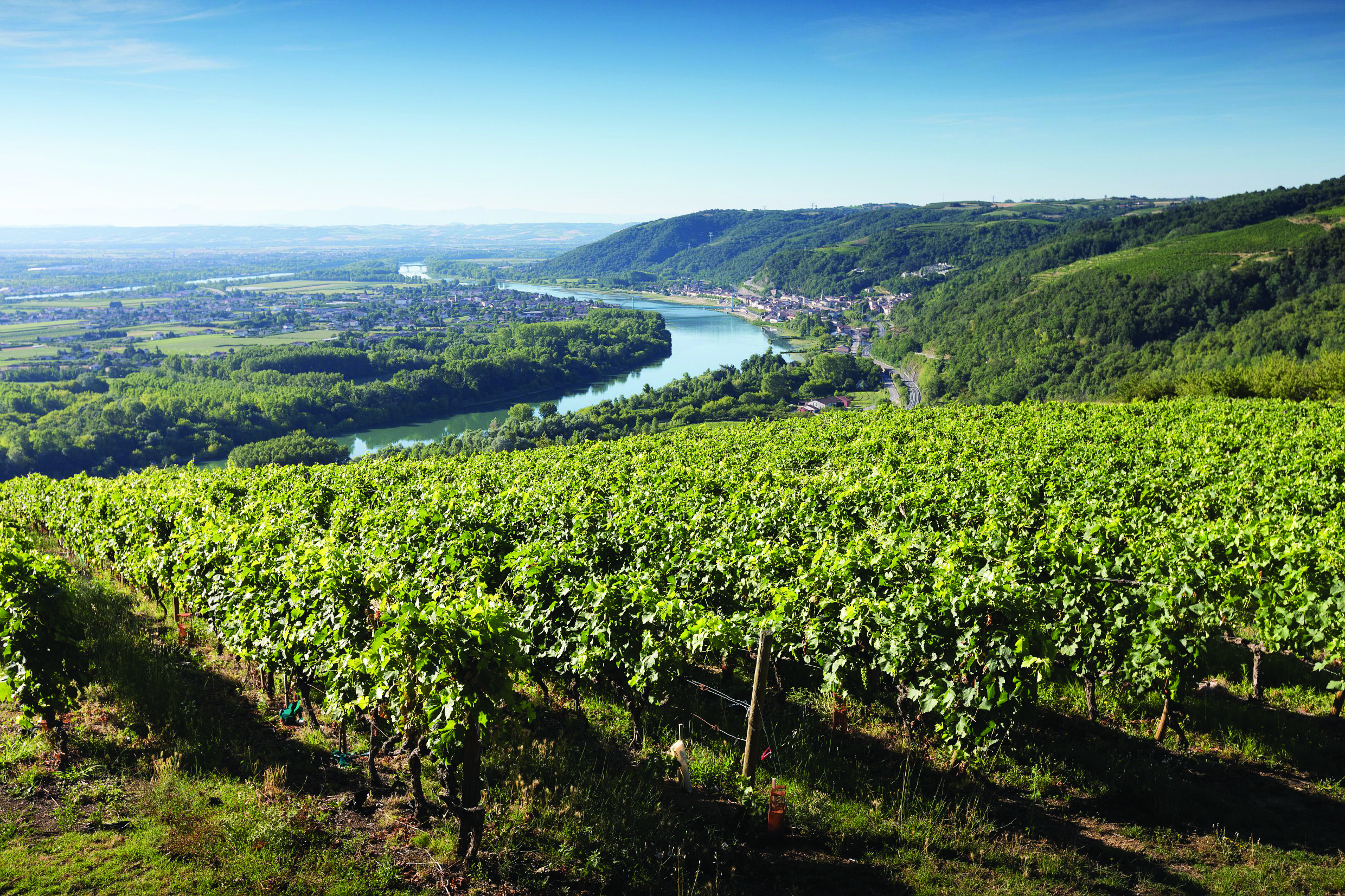Tasting showcases style, consistency and value in Saint-Joseph
The granite slopes of Saint-Joseph offer great value compared to its more famous neighbours, as db discovered in a recent masterclass

Stretching nearly 60 kilometres, from Condrieu in the north to Cornas in the south, Saint-Joseph is the longest and second-largest cru in the Northern Rhône Valley. It is a succession of granitic hillsides, connected by character rather than village.
Despite its impressive length, Saint-Joseph’s terroir is relatively homogenous, including mainly granite soils with south- or southeast-facing slopes. All benefit from the drying north wind that whistles down the valley: La Bise, also known as Le Mistral in the Southern Rhône.
Grape varieties are also more straightforward in Saint-Joseph than in the south. Red wines are made from Syrah, while whites are made from Marsanne or Roussanne or, in some cases, both. The grapes must be hand-harvested due to the vertiginous terraces that make large machinery impossible to use.
The region has produced wine since Ancient Roman times, but the official appellation was established in 1956, originally consisting of only six villages. The most renowned of these was Tournon, located just across the river from Tain L’Hermitage, along with its neighbour, Mauves. This original heartland is characterised by a specific type of coarse-grained granite, resulting in bold and concentrated styles.
In 1969, the appellation was expanded northwards to include 20 additional villages and, today, 130 private domaines are bottling Saint-Joseph, along with 30 négociants and three co-operatives. While the quality of wines from these northern villages, such as Chavanay, can be equally high, their style is subtly different from those produced in the south. Moreover, wines from the northern and southern areas may be delicious, but they pair best with different foods and occasions. However, all the appellation wines share certain characteristics: savouriness, freshness and drinkability.
According to Rhône expert Matt Walls: “To know the style of Saint-Joseph you’re going to get, it pays to know where the vineyard is located.” In a recent masterclass, Walls drew attention to Saint-Joseph’s spectrum of styles with eight wines, each showing subtle differences in the appellation’s soil and climate.
Versatile whites
Walls presented two white wines that exemplified the diversity of the appellation and showcased their unique characteristics – beginning with a lighter 2023 vintage from Domaine Graeme & Julie Bott. This Saint-Joseph is notably Roussanne-heavy, containing 30% Marsanne, and is sourced from the north of the appellation, in Chavanay and Saint-Pierre-de-Boeuf. Walls emphasised its brisk acidity, floral notes and 12.5% ABV, positioning it as a highly drinkable option to match white fish.
As a counterpoint, Domaine Coursodon Saint-Joseph Blanc Le Paradis Saint-Pierre 2022 is a blend featuring 90% Marsanne sourced from Mauves in the southern part of the appellation. According to Walls, the wine embodies the richer and riper style characteristic of the area, with its natural weight enhanced by new oak. He recommended it as a gastronomic wine to pair with roast chicken or pork chops.
The two bottles presented distinct approaches for various occasions, while highlighting their similarities. A show of hands from the masterclass audience revealed another similarity: on that day, their popularity was equal.
Partner Content
Recent releases
Diving into the spectrum of Saint-Joseph red wines, Walls featured three reds from the 2022 harvest. The first, the organic La Croix des Vignes from Paul Jaboulet Aîné – a respected house acquired by the Frey family in 2005 – represented the appellation’s denser, riper character. Made with vines grown on a 1.5-hectare plot of south-facing vines near Tournon, the wine evoked lush flavours of blackberry and blackcurrant, and firm, chocolatey tannins.
Representing light extraction and finesse, the second 2022 red came from Thomas Farge. His Grand Angle originates from the original southern heart of Saint-Joseph, just north of Tournon. As Walls described, the wines there tend to be light and highly drinkable, with notes of violet.
The last of the trio, Domaine Rémi Niero Bois Prieur, comes from a one-hectare vineyard located much further north, in Saint-Pierre-de-Boeuf. While Niero is celebrated for his Condrieu wines, he has also recently begun producing Saint-Joseph. According to Walls, his wine showcases the elegance of this part of the appellation, presenting a graceful style with bright acidity, pronounced salinity and a long, focused finish.
A contrasting vintage
The masterclass featured three wines from 2021, which provided an intriguing contrast to the red wines from 2022. In 2021, the Northern Rhône, like much of France, experienced significant frost damage. However, the mild weather that followed led to the production of crisp, fresh styles of wine.
Blending southerly parcels in Mauves and Tournon with a more northern plot in Charnas, M Chapoutier Les Granilites, with its more tense and upright stance, contrasted with the 2022 wines. Walls explained that the wine was a great example of how conditions in 2021 resulted in more red berry notes and accentuated its salinity.
Guigal Vignes de l’Hospice, sourced from a steep vineyard directly behind the village of Tournon, presented a different style of Saint-Joseph. Walls drew attention to the wine’s new leather, clove and spice notes, with 30 months of ageing in new oak barrels contributing to its weight and structure on the palate.
The last wine, Domaine Benoît Roseau Patagone, was also the surprise of the tasting. According to Walls, the 2021 vintage is a great representation of a fresh and energetic Saint-Joseph, with vibrant black fruit flavours.
The slopes of Saint-Joseph can be just as challenging to cultivate as the terraces of Côte-Rôtie or Cornas, yet the prices are significantly lower. Saint-Joseph is an excellent source for finding great value wines from the Northern Rhône, both red and white.
Related news
Small yields, big promise for the Rhône in 2025




